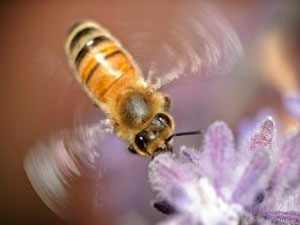英国《Nature》目录要览:2010-04-01出版
时间:2010-04-02 阅读: 我要评论:
high concentration of atmospheric CO2 and/or CH4, causing a greenhouse
effect
that would have compensated for the lower solar luminosity at the time and
allowed liquid water to be stable in the hydrosphere. Here it is shown,
however,
that the mineralogy of Archaean sediments is inconsistent with such high
concentrations of greenhouse gases. Instead it is proposed that a lower
albedo on the Earth helped to moderate surface temperature.
Minik T. Rosing, Dennis K. Bird, Norman H. Sleep and Christian J. Bjerrum
doi:10.1038/nature08955
Abstract:
http://www.nature.com/nature/journal/v464/n7289/abs/nature08955.html
Article:
http://www.nature.com/nature/journal/v464/n7289/full/nature08955.html
Hominins on Flores, Indonesia, by one million years ago pp748-752
Evidence for hominin activity on Flores, Indonesia, has been thought to go
back at least 800,000 years, as shown by fission-track dating at Mata Menge
in
the Soa Basin. However, new research at another locality in the Soa Basin
uses
the more accurate technique of 40Ar/39Ar dating to show that hominins were
living on Flores at least a million years ago.
Adam Brumm et al.
doi:10.1038/nature08844
Abstract:
http://www.nature.com/nature/journal/v464/n7289/abs/nature08844.html
Article:
http://www.nature.com/nature/journal/v464/n7289/full/nature08844.html
Curvature in metabolic scaling pp753-756
It has been thought that the basal metabolic rate of organisms increases as
body
mass is raised to some power, p. But the value of p has proved
controversial,
with both 2/3 and 3/4 being proposed. It is found here that the relationship
between mass and metabolic rate does not follow a pure power law at all, and
requires a quadratic term to account for curvature. Taking temperature and
phylogeny into account, this explains why different data sets have produced
different exponents when a power law has been fitted.
Tom Kolokotrones, Van Savage, Eric J. Deeds and Walter Fontana
doi:10.1038/nature08920
Abstract:
http://www.nature.com/nature/journal/v464/n7289/abs/nature08920.html
Article:
http://www.nature.com/nature/journal/v464/n7289/full/nature08920.html
The genome of a songbird pp757-762
The genome of the zebra finch - a songbird and a model for studying the
vertebrate brain, behaviour and evolution - has been sequenced. Comparison
with the chicken genome, the only other bird genome available, shows that
genes that have neural function and are implicated in the cognitive
processing
of song have been evolving rapidly in the finch lineage. Moreover, vocal
communication engages much of the transcriptome of the zebra finch brain.
Wesley C. Warren et al.
doi:10.1038/nature08819
Abstract:
| 《Nature》目录要览 — 2011-04-28出版 |
| 《Nature》目录要览:2011-01-20出版 |
| 《Nature》目录要览:2010-12-23出版 |
| 《Nature》目录要览:2010-12-16出版 |
| 《Nature》目录要览:2010-12-09出版 |
| 《Nature》目录要览:2010-12-02出版 |
特别声明:本文转载仅仅是出于传播信息的需要,版权归原作者所有,并不意味着代表本网站观点或证实其内容的真实性; 如其他媒体、网站或个人从本网站转载使用,须保留本网站注明的“来源”,并自负版权等法律责任; 作者如果不希望被转载或者联系转载稿费等事宜,请与我们接洽:service#environmentor.cn(请将#改为@)。
来源:Nature 作者:Environmentor (环境人 Environmentor.Cn)





